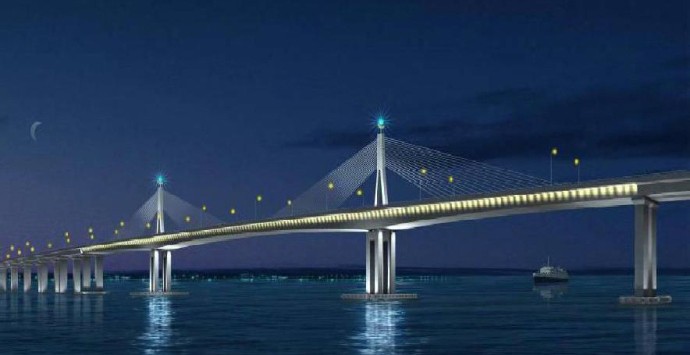Second Penang Bridge is a 24-kilometer (14.9-mile) bridge linking the Penang Island and the Malaysia Peninsula and is the largest civil engineering project in the past 20 years in the region. It consists of precast segmental concrete marine viaducts in 55-meter (180-feet) span modules and a cast in-situ concrete cable-stayed bridge measuring 475 meters (1,558 feet).
Working with the China Highway Planning and Design Institute (HPDI), AECOM was the consultant of China Harbour Engineering Company (CHEC) to provide feasibility studies, detailed design as well as pre-tendering and post-tendering services and site supervision since 2008. AECOM’s team in Malaysia, together with engineers from the long-span and specialty bridges group, worked in the design, construction supervision, and construction engineering of this record-breaking project. AECOM also provided specialist consultancy on aerodynamics, navigation risk assessment and ship impact studies, seismic analyses, wind and structural health monitoring, fire hazard assessment, and resolution of construction challenges in the substantial marine piling operation. A special aspect of the project involved applying intelligent construction engineering techniques to enable successful erection of the 240-meter (787-feet) main span cable-stayed bridge over the main navigation channel.
“The Second Penang Bridge is subject to the merciless forces of nature, such as earthquakes, potential tsunamis, and wind, to name a few; and is exposed to a hostile marine environment. These challenges were overcome through meticulous planning and design, and the result is one of the world’s largest sea-crossing projects in recent years. We have helped accomplish an immense human endeavor; creating many innovations along the way.”
Dr. Robin Sham, AECOM’s global long-span and specialty bridges director
Pioneering Bridge Technology
In addition to its large size, this RM4.5-billion project pioneered new construction methods to minimize the risk caused by seismic activity near the Sunda tectonic plate, including the use of 2-meter-diameter (6.5-foot-diameter) bored piles founded to a depth in excess of more than 120 meters (394 feet) for the cable-stayed bridge, and the use of high-damping rubber bearings for seismic isolation of the marine viaducts.
The whole sea-crossing project introduced numerous innovations, including intelligent bridge geometry control, a lightweight form traveller machine for cable-stayed bridge erection, the extensive use of the statnamic pile-loading testing method and the use of high-damping rubber bearings for seismic isolation. The project also saw the most extensive use of precast hollow concrete spun piles in bridgework, and substantial driven tubular steel piles in a marine environment.

